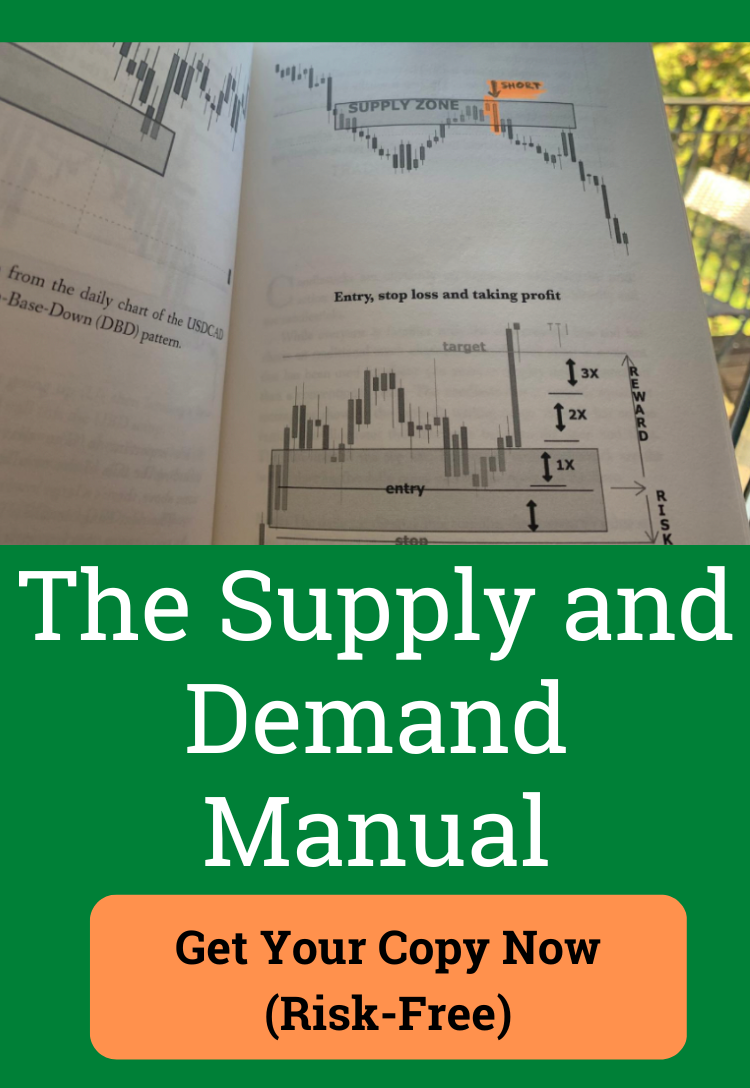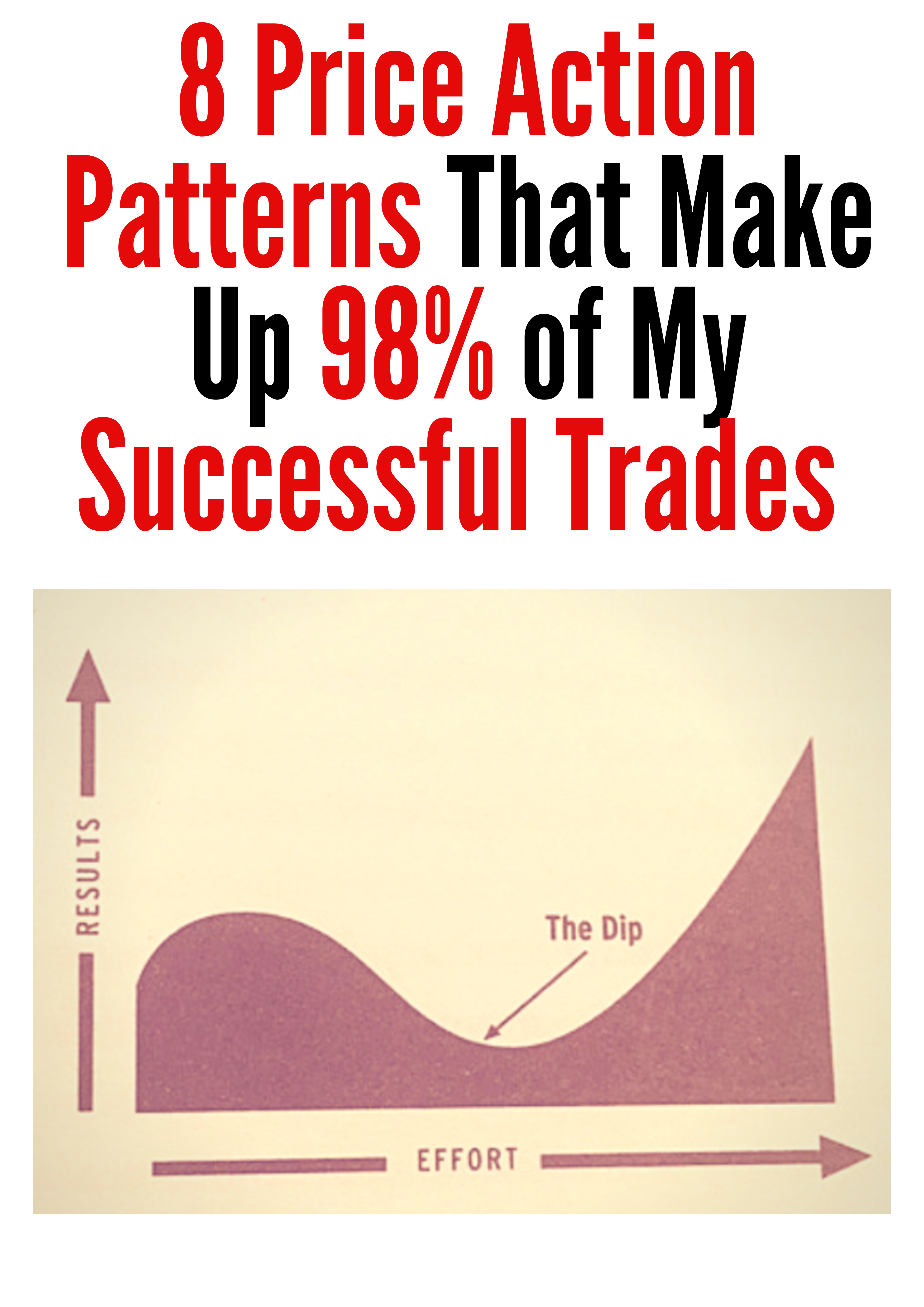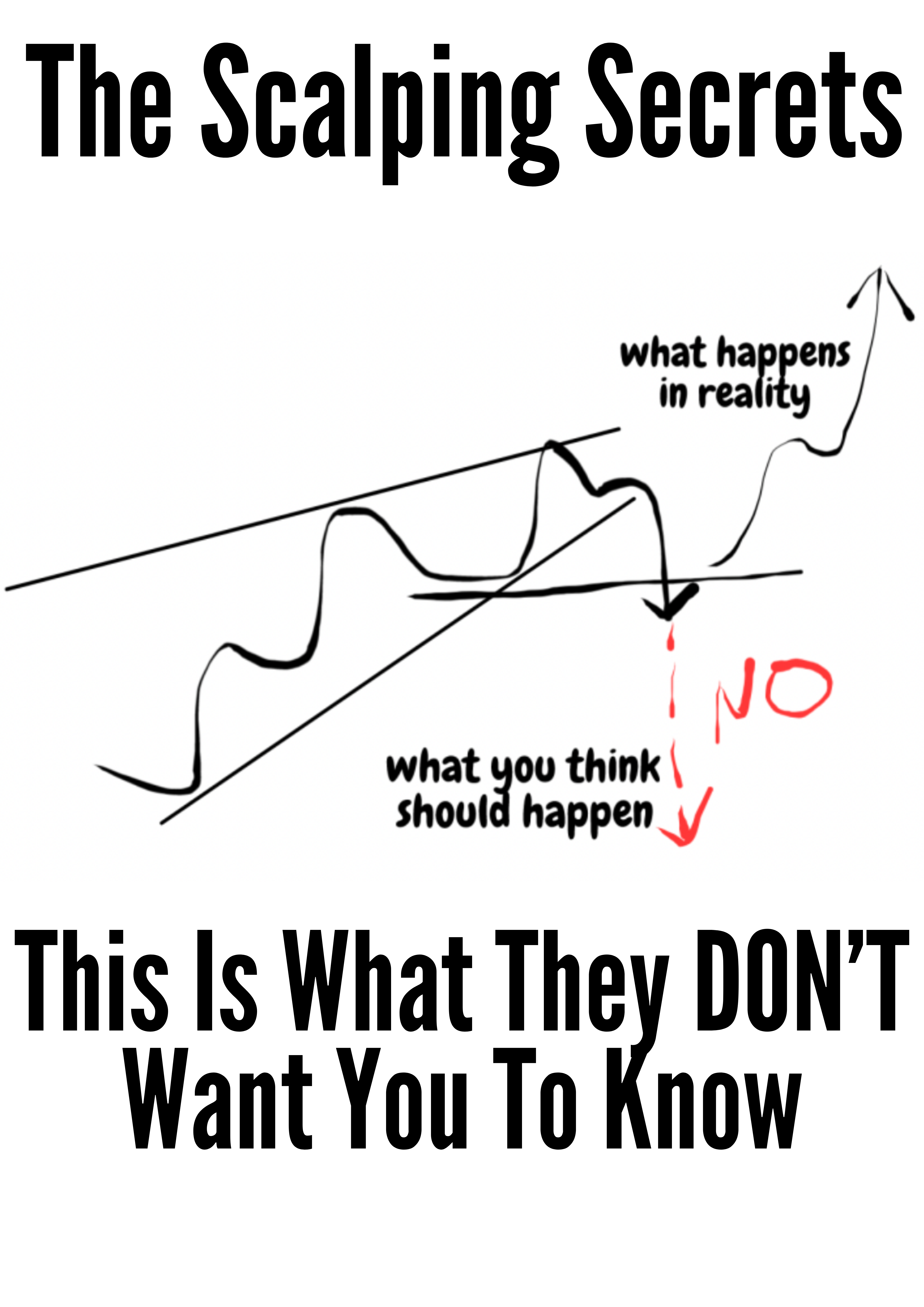Master the Inverted Cup and Handle Pattern for Smart Trades
Spotting the Inverted Cup and Handle Pattern Like a Pro
Imagine a balloon slowly deflating after a birthday party. That’s the basic idea behind the inverted cup and handle pattern in trading. This pattern isn't some mystical sign; it reflects how traders are thinking and acting in real-time. Once you grasp its subtleties, you'll start seeing chances where others only see a confusing market.
This bearish reversal pattern appears when early optimism fades into exhaustion. It often surprises traders because it looks like a potential upward move before suddenly shifting downwards. Understanding how the pattern forms is the first step to using it to predict market moves. Look for the rounded "cup" shape, made by a gradual price drop from a high point, followed by a slight price bounce that forms the "handle."
The inverted cup and handle pattern is a key bearish indicator across various markets, from stocks and commodities to currencies. For instance, if this pattern shows up in Starbucks stock, it has historically signaled a price drop after breaking below the handle's support level. Traders generally look for a smooth, rounded cup and a short handle that retraces less than half of the cup's height. Often, trading volume decreases as the cup forms and then spikes as the price breaks down. Learn more about the inverted cup and handle here: New Trading
Mastering the Visual Elements
Now, let's examine the specific visual cues of a true inverted cup and handle. The cup should look like an upside-down "U," rounded and fairly symmetrical. A sharp or distorted cup can be a less reliable signal. The handle marks a brief pause before the expected downward movement. It should be shorter than the cup, usually retracing less than 50% of the cup's depth. For a refresher on trendlines, see Colibri Trader's guide.
Timing and Confirmation
The timing of the pattern matters just as much as its shape. An inverted cup and handle that takes weeks or months to form is typically more significant than one that appears in just a few days. A longer formation suggests a more substantial change in market sentiment. Finally, confirmation is essential. A price drop below the handle's support line, combined with higher trading volume, confirms the pattern and signals the likely start of a downward trend.
Separating Signal from Noise
Not every price dip and recovery creates a reliable inverted cup and handle. It's important to tell the difference between real patterns and random market movements. Focus on patterns appearing within a clear downtrend. A sideways or upward-trending market can create misleading signals. Also, pay attention to volume. Lower volume during cup formation and a surge on the breakout strengthen the pattern's reliability. Mastering these visual elements, timing, and confirmation techniques will significantly improve your ability to spot and potentially profit from the inverted cup and handle pattern.
The Hidden Psychology Behind Market Sentiment Shifts
Imagine a bustling restaurant as the dinner rush winds down. The initial energy peaks, then slowly fades. A few latecomers might briefly liven things up, but the overall trend is towards quiet. This, in essence, captures the market sentiment shift illustrated by the inverted cup and handle pattern.
This pattern visually represents a transition from optimism to pessimism. The "cup's" initial peak reflects a high point of market confidence. As prices fall, carving out the rounded cup shape, uncertainty starts to creep in.
The small upward "handle" offers a deceptive glimmer of hope – a last stand by the bulls. But the eventual drop below the handle signals capitulation – a final acceptance that the bears are in control.
Decoding the Emotional Stages
The inverted cup and handle pattern unfolds in distinct psychological stages. First, the initial upward price movement fuels confidence, driving prices higher. This is the peak of optimism – a belief the market can only go up.
Then, cracks begin to appear. Disappointing earnings reports or shifting economic data introduce doubt, leading to selling pressure. This pressure forms the rounded "cup" as traders grow more cautious. Some take profits; others hesitate to enter new long positions.
The handle represents indecision – a tug-of-war between bulls and bears. Its formation, and the pattern's overall trading dynamics, are tied to market psychology and volume. First described by William O'Neil in his book How to Make Money in Stocks, the pattern can signal potential market reversals. You can brush up on the inverted cup and handle basics here: LuxAlgo.
Breaking below the handle’s low often confirms a significant bearish move. The handle acts as a final test of the remaining bullish sentiment.
Time and Emotional Weight
The time it takes for the pattern to form is crucial. A pattern developing over weeks or months carries more weight than one that appears quickly. This is because a longer formation reflects a deeper shift in market sentiment.
A prolonged decline shows a gradual erosion of confidence, while a quick drop might simply be temporary market noise. For more on trading psychology, check out Colibri Trader's guide.
Understanding these psychological nuances offers insights into the market’s underlying forces. This awareness allows traders to anticipate breakouts and position themselves accordingly, capitalizing on shifts in sentiment.
By recognizing the emotional narrative of the inverted cup and handle, traders gain a valuable edge. They can act before the shift becomes widely apparent.
Identification Criteria That Actually Separate Winners From Losers
Let's be honest: not every dip in the market is a golden opportunity. Just like a seasoned detective sifts through clues, experienced pattern traders use specific criteria to separate real setups from market mirages. Think of it as a financial fingerprint analysis. We'll explore the key characteristics pros use to validate these inverted cup and handle patterns, looking at crucial aspects like cup depth, handle duration, volume, and overall price action. This will help you distinguish between clear signals and messy market noise.
This infographic provides a streamlined process for confirming an inverted cup and handle pattern. It starts with spotting the potential pattern, then checks for oversold conditions using the Relative Strength Index (RSI) and confirms with volume spikes, ultimately leading to pattern confirmation. Notice how it combines technical indicators like RSI with volume analysis for a more robust validation.
Measuring Cup Depth and Symmetry
Just like a well-crafted coffee cup, the inverted cup needs proper proportions. The cup's depth, measured from peak to trough, should be significant. A shallow cup often suggests weak selling pressure – imagine a gentle ripple in a pond versus a powerful wave. Ideally, both sides of the cup should be relatively symmetrical. A lopsided cup might indicate an unbalanced market, while symmetry often reflects a more natural shift in sentiment.
The Handle's Significance
The handle is that brief pause or pullback within the larger downward trend. Its length and depth are vital clues. The handle should be shorter than the cup, typically retracing less than one-third of the cup’s depth. Think of it as a small breath before a deeper plunge. A longer handle might signal the bears are losing their grip. Also, the handle’s volume should be lower than the cup’s volume, hinting at decreased selling pressure before a potential breakout.
Volume and Price Action Dynamics
Volume acts as a truth serum for price movements. Decreasing volume during cup formation is a positive sign, indicating weakening selling momentum. A sudden volume surge when the price breaks below the handle's support line validates the pattern and suggests a strong move is brewing. It's like a crowd suddenly rushing towards an exit.
Now, let's talk about price action quality. A smooth, rounded cup with a well-defined handle is much more reliable than a jagged, erratic one. Clean price action suggests a more orderly shift in market sentiment – a coordinated dance rather than a chaotic scramble.
To help solidify these concepts, let's look at a practical checklist:
Inverted Cup and Handle Pattern Identification Checklist
| Pattern Element | Requirement | Quality Indicator | Common Mistakes |
|---|---|---|---|
| Cup Depth | Substantial, ideally more than 10-20% | Deep cup suggests strong selling pressure | Mistaking shallow dips for a valid cup |
| Cup Symmetry | Relatively symmetrical sides | Reflects a balanced market dynamic | Lopsided cups can be unreliable |
| Handle Duration | Shorter than the cup, typically less than 1/3 of cup depth | Brief pause before breakout | Long handles suggest waning bearish momentum |
| Handle Volume | Lower than cup volume | Decreased selling pressure | High handle volume indicates continued selling |
| Price Action | Smooth, rounded cup and well-defined handle | Orderly shift in sentiment | Jagged, erratic formations are less reliable |
This checklist gives you a quick reference guide for identifying reliable inverted cup and handle patterns. Remember, these are guidelines, not rigid rules. Experience and context are crucial.
Market Context Matters
The inverted cup and handle pattern works best in a downtrending market. Finding one during an uptrend could be a false signal, like seeing a familiar face in a crowded room only to realize it's a stranger. The timeframe you're looking at is important too. Patterns that develop over weeks or months tend to be more reliable than those that pop up in just a few days.
By mastering these identification criteria, you'll move from guessing to analyzing, from hoping to understanding. This empowers you to make smarter, more informed trading decisions based on evidence, not just gut feeling.
Volume Analysis: Reading the Smart Money's Playbook
While most eyes are glued to the ticker, watching the price dance, a more insightful story unfolds in volume. Think of it like being at a crowded conference – everyone's focused on the keynote speaker, but you're observing the side conversations, picking up on the real sentiment. Volume reveals the actions of substantial investors, offering a glimpse into their true intentions, beyond the public pronouncements.
This section delves into the volume patterns that accompany a genuine inverted cup and handle pattern. We'll explore how volume acts as a confirming factor at each stage, from the initial decline during cup formation to the decisive moves around the handle.
Deciphering Institutional Whispers
Imagine a popular restaurant slowly emptying out after the lunch rush. A few diners leave, then a few more, and eventually, there's a steady flow towards the exit. This gradual, then more pronounced shift mirrors the volume action of a true inverted cup and handle.
During the cup formation, dwindling volume suggests weakening selling pressure. It's like the gradual release of air from a tire – the initial force dissipates over time. This implies that while the price is drifting lower, the intensity of selling is easing.
The handle is where things become particularly revealing. Volume should contract further here, indicating a lull in selling activity. Think of it as the brief pause before the next act. Low volume in the handle suggests remaining buyers are hesitant, but sellers are also losing conviction.
The real action takes place on the breakout. A surge in volume as the price breaks below the handle's support confirms the pattern's legitimacy. This is the moment of truth, like a sudden rush for the doors – sellers have taken control, and the selling pressure intensifies. This volume spike is crucial for validating the pattern.
Distinguishing Signal from Noise
Not every drop in volume carries the same weight. It's important to differentiate between significant institutional selling and the more sporadic activity of retail investors. Think of the difference between a gentle stream and a flash flood.
A steady decline in volume during the cup formation is a positive indicator. It suggests a gradual easing of selling pressure. This contrasts sharply with erratic volume spikes, which might indicate short-term market noise rather than a sustained trend.
Furthermore, the volume during the handle formation should be significantly lower than the volume seen during the cup. This signals a period of consolidation, where both buyers and sellers are uncertain. Conversely, a handle characterized by high volume could suggest persistent selling pressure and a potential false breakout.
Finally, the breakout volume serves as the ultimate confirmation. A noticeable surge in volume as the price drops below the handle demonstrates conviction. This is often a sign of informed investors making their move. A weak breakout, accompanied by low volume, is easily overlooked and often unreliable.
By learning to interpret these volume clues, you gain a significant advantage. You can anticipate potential breakouts, verify the authenticity of patterns, and steer clear of costly false signals. This empowers you to shift from merely hoping the pattern will work to recognizing when it's likely to play out. We'll explore real-world instances of how this analysis can make a difference and introduce practical strategies for incorporating it into your trading approach.
Battle-Tested Trading Strategies That Generate Results
Trading successfully isn't about memorizing textbook definitions. It's about understanding the market’s rhythm and knowing how to react. Think of it like learning to surf – you need to feel the wave, not just read about it. So, let's ditch the theory and dive into the practical application of the inverted cup and handle pattern. We’ll explore how seasoned traders use this pattern to profit in real market conditions.
Multiple Entry Points: From Conservative to Aggressive
Just like choosing the right spice level at a restaurant, you can choose your entry point based on your risk tolerance. Here are a few options:
-
Conservative Entry: Picture a cautious chef waiting for the perfect moment to add a key ingredient. Similarly, wait for a clear break below the handle's support, backed by a surge in volume. This confirms the downward move and reduces the risk of false breakouts. However, it might mean sacrificing some of the initial profit.
-
Aggressive Entry: Imagine a bold chef adding a spice even before tasting the dish. Likewise, enter a short position as the price approaches the handle’s support. This anticipatory move can yield higher profits but increases the risk of a false breakout if the price reverses.
-
Hybrid Approach: Think of a chef who adds a pinch of spice, tastes, and then adjusts. Similarly, enter a small initial position as the price nears the handle's support, adding more if the breakout is confirmed by increased volume. This balances risk and reward.
Position Sizing and Stop-Loss Placement
Think of position sizing as carefully portioning your ingredients. You don’t want to use everything at once. Adjust your trade size based on the pattern's reliability and your account size. This ensures no single trade wipes you out.
Stop-loss orders are your safety net, like an oven timer preventing your dish from burning. Place your stop-loss just above the handle's high. This gives the trade room to breathe while limiting potential losses if the pattern fails. Consider the pattern's volatility when setting your stop-loss, allowing for price swings.
Profit-Taking Strategies for Maximum Gains
Knowing when to take profits is like knowing when a dish is perfectly cooked. We’ll explore profit targets based on the cup’s depth and potential support levels below the breakout. This helps secure profits while protecting you from sudden reversals. Trailing stop-loss orders are like adjusting the oven temperature to keep your dish warm without overcooking it. They lock in profits as the price moves favorably.
Adapting to Different Markets and Timeframes
Just as a recipe might need tweaking based on the oven or ingredients, your trading strategies should adapt to different market conditions and timeframes. A fast-moving market requires tighter stop-losses and quicker profit-taking. A slower market allows for more patience. Remember, the inverted cup and handle can appear on any chart, from short-term intraday to long-term weekly or monthly charts.
Complementary Indicators for Enhanced Accuracy
Like a chef using multiple senses to judge a dish, combining the inverted cup and handle with other technical indicators enhances accuracy. For example, the Relative Strength Index (RSI) can identify oversold conditions, adding an extra layer of confirmation. Relative Strength Index (RSI) Similarly, moving averages can help filter false signals and identify stronger trends. Moving Averages
Recognizing Failing Patterns and Exiting Efficiently
Not every dish turns out perfectly, and not every inverted cup and handle pattern is profitable. Learn to spot warning signs like a handle that's too long or breaks back above the cup’s rim. Exiting a losing trade quickly is crucial, like discarding a burnt dish to save the meal. Develop a disciplined exit strategy and stick to it, even if it means a small loss. Preserving capital is key for long-term success.
To further illustrate these strategies, let’s compare them in a table:
Trading Strategy Comparison for Inverted Cup and Handle Patterns
Different approaches to trading inverted cup and handle patterns with risk-reward profiles
| Strategy Type | Entry Method | Risk Level | Typical Reward Ratio | Best Market Conditions |
|---|---|---|---|---|
| Conservative | Breakout below handle with volume confirmation | Low | 1:2 or lower | Trending markets with clear breakouts |
| Aggressive | Entry near handle support, anticipating breakout | High | 1:3 or higher | Volatile markets with strong momentum |
| Hybrid | Small initial entry near handle support, add to position on confirmed breakout | Medium | 1:2.5 (variable) | Markets with moderate volatility and potential for strong trends |
This table summarizes the various approaches, highlighting the trade-offs between risk and reward. Choosing the right strategy depends on your individual trading style and market conditions. Remember, consistent profitability requires a balanced approach to risk management and a deep understanding of market dynamics.
Professional Risk Management That Protects Your Capital
Even with the most promising setups, trading carries inherent risks. The inverted cup and handle pattern, while reliable, is no exception. Sometimes it works, sometimes it doesn't – that's the market. This is why seasoned traders don't just focus on finding patterns; they place equal importance on managing risk. Protecting your capital through effective risk management is what separates consistently profitable traders from those who deplete their accounts. Losing trades are a fact of trading life, and it's how you handle them that truly matters.
Position Sizing: Balancing Risk and Reward
Think of position sizing like a chef carefully selecting the right size pot. Too small, and you won't feed everyone. Too big, and you've wasted ingredients. In trading, the "ingredients" are your funds, and the "meal" is your potential profit. Your position size, the amount of capital you risk on a single trade, should reflect the pattern's perceived reliability and your overall account balance. Risking 2% of your account on a trade with a potential 4% return, for example, creates a healthy risk-reward balance. This approach cushions your capital from significant losses if the trade doesn't go as planned.
Stop-Loss Strategies: Protecting Your Capital
Think of stop-loss orders as guardrails on a treacherous road. They keep you from careening off the cliff. These orders automatically exit a trade at a predetermined price if the market moves against you, limiting potential losses. When trading the inverted cup and handle, a good practice is to set your stop-loss just above the handle's high. This allows room for the pattern to complete while safeguarding you from a false breakout. Statistically, about 60% of inverted cup and handle trades end in losses, highlighting the critical importance of a sound stop-loss strategy. Learn more about inverted cup and handle patterns here. This underscores the value of confirming the pattern with other indicators, as its success can vary with market conditions. Combined with volume analysis and other technical tools, the inverted cup and handle can offer valuable insights into potential bearish trends.
Portfolio Diversification: Spreading Your Risk
Imagine your trading portfolio as a garden. A wise gardener wouldn't plant only one type of flower. Diversification, spreading your trades across different assets and patterns, is like planting a variety of flowers in your garden. If one plant withers, the others can still thrive. This protects your overall portfolio from being significantly impacted by a single losing trade.
You might be interested in: Managing Trading Risk
The Psychology of Risk Management: Discipline and Patience
Successful traders approach risk management differently than gamblers. They understand that consistent, smaller gains accumulated over time are more valuable than the risky pursuit of a single, large win. This long-term perspective requires patience and discipline – the cornerstones of sound risk management.
Common Mistakes to Avoid
Even promising traders can fall prey to common risk management pitfalls:
- Oversizing positions: Risking too much on one trade can quickly deplete your account, regardless of your win rate.
- Ignoring stop-loss orders: Neglecting stop-loss orders can lead to devastating losses.
- Chasing losses: Trying to recoup losses quickly by increasing risk often exacerbates the problem.
- Emotional trading: Fear and greed are enemies of sound judgment, often leading to impulsive and detrimental trading decisions.
Mastering these principles builds a strong foundation for sustained success. Understanding position sizing, implementing stop-loss orders, diversifying your trades, and cultivating a disciplined mindset are not just techniques; they are essential practices that protect your capital and enable you to navigate market volatility with confidence.
Your Complete Action Plan for Pattern Trading Success
This section bridges the gap between theory and practice, turning the inverted cup and handle pattern into a tangible trading roadmap. We'll cover step-by-step strategies, set realistic expectations, and explore systems for constant improvement. Think of it like building a house: we've got the blueprints (the theory) and the lumber (the pattern), now let's start constructing.
This TradingView screenshot showcases an inverted cup and handle taking shape on a stock chart. Note the rounded "cup" followed by the smaller "handle" consolidation, hinting at a potential breakout. The declining volume during cup formation, then surging on the breakout, adds another layer of confirmation.
Building Your Pattern Recognition Skills
Spotting these patterns requires dedicated effort. It’s similar to learning a new language – immersion and repetition are key. Start by examining historical charts, picking out past inverted cup and handle formations. This trains your eye to recognize the pattern's unique shape and volume behavior. A personal trading journal is invaluable here; document potential patterns, noting formation timeframes, volume changes, and the resulting price action. This journal becomes a personalized textbook, helping you refine your understanding and spot recurring mistakes.
Creating Your Personal Trading Rules
Just as every artist has a unique style, every trader needs a personalized rulebook. These rules should reflect your risk tolerance, trading style, and even your lifestyle. Decide on your entry strategy – will you be conservative, aggressive, or somewhere in between? Establish clear stop-loss and profit-taking points for each trade. Write these rules down and stick to them religiously. This framework keeps emotions in check, allowing for objective decisions and avoiding impulsive trades based on fear or greed.
Developing Patience and Discipline
Pattern trading is a waiting game. It's like fishing – you can't force the fish to bite. Not every setup will be a winner, and patterns won't always unfold perfectly. Accepting losses is part of the deal. Concentrate on following your rules, managing risk, and extracting lessons from both wins and losses. This cultivates resilience and prepares you for the unavoidable ups and downs of trading.
Beginner Mistakes and Advanced Techniques
New traders often stumble into common pitfalls. Oversizing positions, risking too much on a single trade, is a classic example. Another is ignoring stop-loss orders, clinging to the hope of a market reversal. Learn from these errors and prioritize risk management from day one. As you gain experience, refine your approach with advanced techniques. Incorporating indicators like the Relative Strength Index (RSI) or moving averages can provide extra confirmation and weed out false signals.
Realistic Timelines and Continuous Improvement
True proficiency in pattern trading takes time. There’s no magic bullet. Focus on continuous learning, constantly adjusting your methods based on real-world results. Regularly review your trading journal, pinpoint areas for improvement, and tweak your strategies accordingly. This ongoing process of learning and adaptation is the cornerstone of consistent profitability.
Maintaining perspective is crucial. Losing streaks happen. Don't let them derail you. See them as learning opportunities. By observing market behavior, dissecting your trades, and systematically learning from both wins and losses, you can dramatically improve your trading performance and achieve long-term success.
Ready to elevate your trading? Explore Colibri Trader’s proven price action strategies and personalized mentoring at https://www.colibritrader.com and unlock your full potential.









